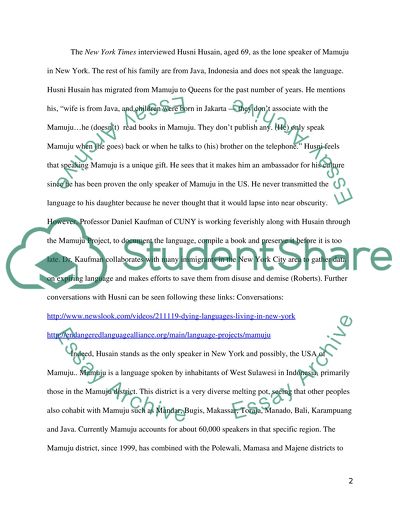Cite this document
(“Mamuju: An Endangered Language Research Paper Example | Topics and Well Written Essays - 1500 words”, n.d.)
Retrieved from https://studentshare.org/english/1451763-final-fieldwork-project
Retrieved from https://studentshare.org/english/1451763-final-fieldwork-project
(Mamuju: An Endangered Language Research Paper Example | Topics and Well Written Essays - 1500 Words)
https://studentshare.org/english/1451763-final-fieldwork-project.
https://studentshare.org/english/1451763-final-fieldwork-project.
“Mamuju: An Endangered Language Research Paper Example | Topics and Well Written Essays - 1500 Words”, n.d. https://studentshare.org/english/1451763-final-fieldwork-project.


